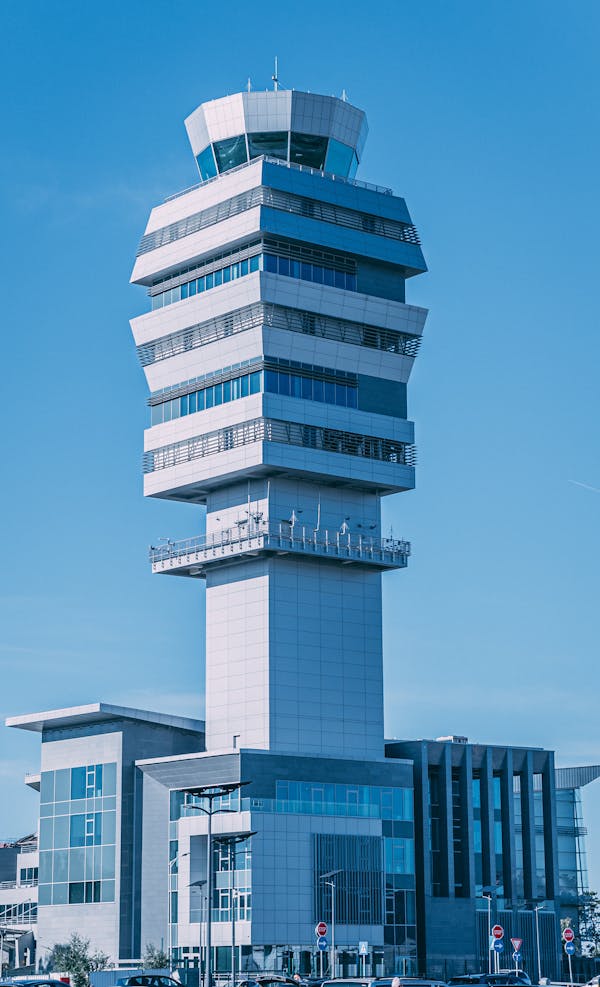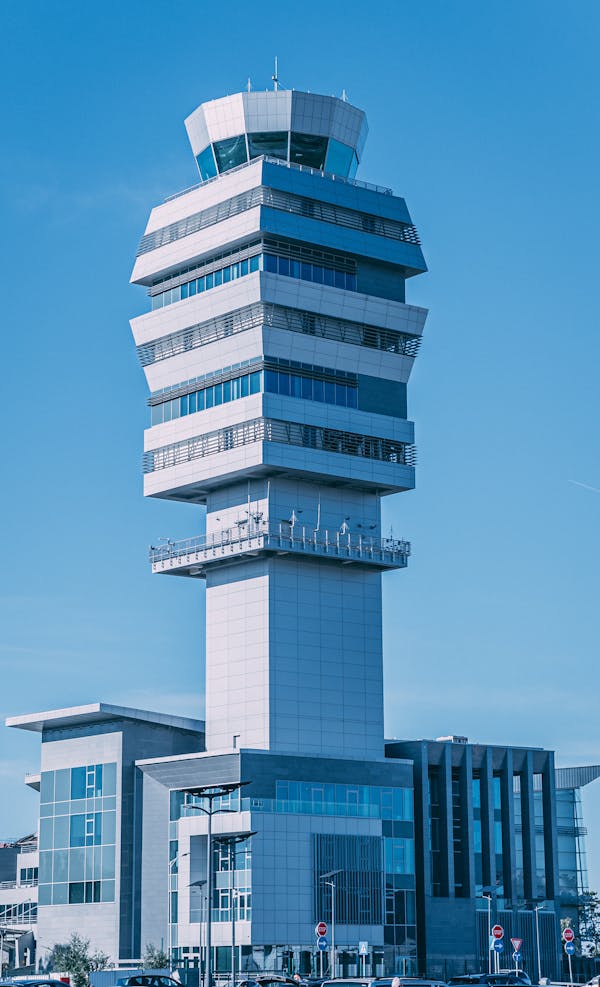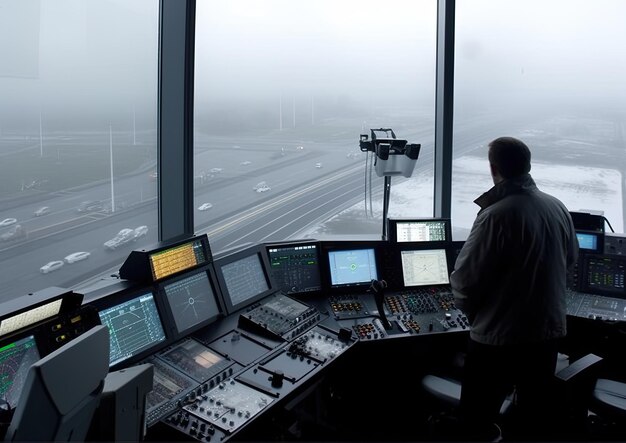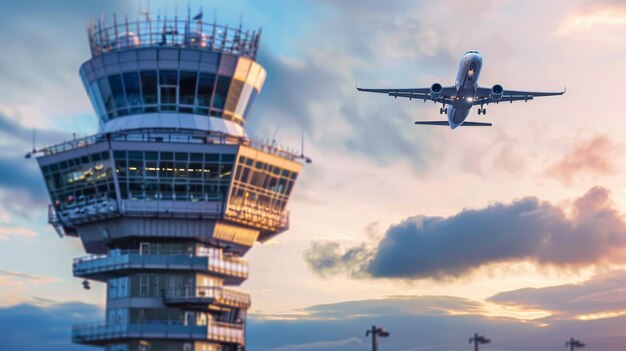
The Vital Role and Importance of Air Traffic Control: Keeping the Skies Safe and Efficient

Ensuring Separation: The Core Responsibility (Points 1-3):
- Preventing Collisions: The primary function of ATC is to maintain safe separation between aircraft, both in the air and on the ground. They achieve this through a combination of:
- Advanced Radar Tracking: Sophisticated radar systems track the position and altitude of every aircraft within their designated airspace, providing controllers with a real-time picture of air traffic.
- Precise Calculations: Controllers use complex calculations to determine safe flight paths for each aircraft, taking into account factors like speed, altitude, and weather conditions.
- Clear Communication: ATCs communicate instructions and clearances to pilots using precise language and standard procedures, ensuring everyone understands their role in maintaining safe separation.
Guiding the Flow of Traffic: Orchestrating Every Stage of Flight (Points 4-7):
-
Airport Traffic Management: ATCs at airport control towers manage the flow of airplanes on the ground,sequencing takeoffs and landings to avoid congestion and delays. They guide pilots through taxiing procedures,ensure smooth transitions between runways, and prioritize aircraft based on factors like fuel level and emergency situations.
-
Approach and Departure Control: These controllers manage the critical transition phases between airport airspace and en route airspace. They guide incoming planes as they prepare to land and departing aircraft as they climb to cruising altitude, ensuring a safe and efficient handover to the next control sector.
-
En Route Navigation: For flights cruising at high altitudes, ATC guides them through designated airways,ensuring smooth and efficient journeys. They monitor flight paths, provide separation instructions, and assist pilots with any navigational needs that might arise.
-
Conflict Resolution: Air traffic controllers are constantly scanning the skies for potential conflicts between aircraft. If a situation arises where separation standards are at risk, they take decisive action to adjust flight paths,issue reroutes, or implement holding patterns to maintain safety.
Providing Information and Support: A Crucial Safety Net (Points 8-11):

-
Weather Updates: ATCs act as a vital source of real-time weather information for pilots. They monitor weather patterns, relay updates on potential hazards like turbulence or thunderstorms, and advise pilots on the safest course of action to navigate these conditions.
-
Emergency Assistance: In the event of an emergency onboard an aircraft, air traffic controllers become a crucial support system. They provide immediate assistance to pilots, coordinate with emergency services on the ground,and guide the aircraft to a safe landing or diversion. They play a critical role in minimizing the impact of an emergency and ensuring the safety of passengers and crew.
-
Lost Communication Procedures: If communication is lost between an aircraft and ATC, established protocols are followed to determine the location of the aircraft and assess the situation. ATCs work with other aviation authorities to implement search and rescue procedures if necessary.
-
Adherence to Regulations: Air traffic controllers ensure that all aircraft operating within their airspace comply with established aviation regulations and flight procedures. This includes enforcing speed limits, maintaining altitude restrictions, and following designated flight paths.
The Different Faces of Air Traffic Control: Specialization for Efficiency (Points 12-14):

-
Air Traffic Control Tower: These controllers, often seen in iconic airport towers, manage aircraft movements near the airport, from taxiing to takeoff and landing.
-
Approach and Departure Control: These controllers guide planes entering and exiting controlled airspace around the airport, ensuring safe transitions between en route and terminal airspace.
-
En Route Control: These controllers oversee the movement of aircraft at cruising altitude, monitoring their position, and providing guidance and separation instructions.
Technology and the Future of ATC: Evolving for Continued Safety (Points 15-17):
-
Advanced Radar Systems: Advancements in radar technology are constantly improving the accuracy and range of air traffic control systems. These systems provide controllers with a clearer picture of air traffic, allowing them to make more informed decisions and manage airspace more efficiently.
-
Data Automation and Communication: The use of data automation and advanced communication systems is streamlining processes and improving coordination between different ATC sectors.
- Focus on Human Expertise: While technology plays an increasingly important role, the expertise and critical decision-making skills of human air traffic controllers remain paramount. They analyze complex situations, adapt to unforeseen circumstances, and exercise judgment to ensure the safe and efficient operation of the air traffic system.
The Importance of Air Traffic Control: An Invisible Guardian (Point 18-20):
-
The Backbone of Modern Aviation: Air traffic control is the invisible backbone of modern aviation. Their dedication and expertise ensure the safety and efficiency of air travel for millions of passengers every day. Without them, our skies would be a much more chaotic and dangerous place.
-
Economic Benefits: Efficient air traffic control systems contribute significantly to the global economy. By ensuring smooth and timely air travel, they facilitate international trade, tourism, and the movement of goods and services.
-
A Global Network: Air traffic control operates as a global network, with international regulations and standardized procedures ensuring seamless handoffs between different control centers as flights travel across continents.
In conclusion, air traffic control plays a multifaceted and vital role in modern aviation. From maintaining safe separation between aircraft to providing critical support in emergencies, their expertise keeps our skies safe and our journeys efficient. As technology continues to evolve, the dedication and skill of air traffic controllers will remain central to ensuring the smooth and safe operation of air travel for generations to come.







